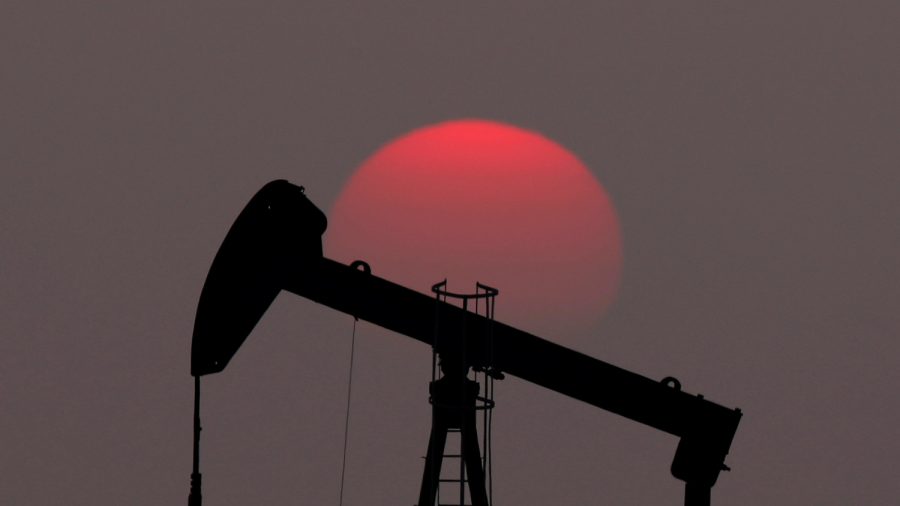Following the shooting down of the U.S. military drone by the Iran Revolutionary Guard, oil prices increased by more than 3 percent to above $63 a barrel on June 23.
The prediction that interest rates would be cut by the Federal Reserve, potentially causing growth, plus a drop in U.S. crude inventories, contributed to the price rise as well, reported Reuters.
Iran Shoots Down US Drone; Oil Price Surges https://t.co/GluZcJBo9z #news #breaking #rttnews pic.twitter.com/rWjMsrlz6d
— RTTNews Top Stories (@RTTNews) June 20, 2019
Last week, oil prices also had a sharp increase after the attack on the oil tankers headed to Asia in the Gulf of Oman.
Pompeo stated on June 13 that Iran was responsible for the attacks against the two oil tankers, one Norwegian owned, and the other one Japanese owned.
President Donald Trump said that it was “too soon” to even consider sorting out a deal with the country.
.@SecPompeo: The United States will defend its forces and interests, and stand with our partners and allies to safeguard global commerce and regional stability. We call upon all nations threatened by #Iran’s provocative acts to join us in that endeavor. pic.twitter.com/snjIVxtl2t
— Department of State (@StateDept) June 13, 2019
Brent crude, the global benchmark, was up $1.73 at $63.55 a barrel at 1218 GMT, having earlier gained 3.3 percent to $63.88. U.S. West Texas Intermediate crude rose $1.84 to $55.60.
#UPDATE
Brent crude #oil price up 3.3%White House meeting to discuss response to #Iran shooting down a U.S. military drone – @kaitlancollins
Iranian surface-to-air missile shot down the drone while operating in int’l airspace over Strait of Hormuz at ~ 11:35 pm GMT on June 19 pic.twitter.com/qr6oO9m5ic
— Heshmat Alavi (@HeshmatAlavi) June 20, 2019
“The risk of a military conflict in the Middle East has risen because of a ratcheting up of tensions between the United States and Iran,” said Abhishek Kumar of Interfax Energy in London.
“Elsewhere, the U.S. Federal Reserve has signaled its willingness to loosen monetary policy over the coming months, which is being perceived as favorable to oil demand.”
Worries about slowing growth in the economy and the U.S.-China trade war has caused oil prices to drop recently. Brent arrived at a 2019 high in April—$75.
.@BGOV Chart of the Day – Oil surges after Iran downs US drone #ChartoftheDay #Energy #Oil #oilprice #Supply #Demand #Inventory #Production #WTI #BrentCrude #CrudeOil #OPEC #pipelines #China #tradewar #Commodities #NYMEX #OOTT #whitehouse #Trump #Iran #MiddleEast #Drone pic.twitter.com/WeyGYqnimX
— Peter Hsu (@phsu54) June 20, 2019
Petromatrix analyst Olivier Jakob told Reuters that the likelihood of the Federal Reserve cutting the rates could show to be the more important factor for oil prices, as long as the U.S.—Iran tension doesn’t intensify.
“The Fed and the cutting of rates is something that will provide more substantial support,” he said.
The Energy Information Administration (EIA) said on Wednesday that U.S. crude oil stocks fell by 3.1 million barrels last week, surpassing the calculations of the analysts.
The OPEC finally agreed to meet on July 1-2 after arguing for the date of the meeting for a month, they seem to be ready to continue a deal on cutting 1.2 million barrels per day of production, a deal that will become void at the end of June.
Trump: ‘Iran Made Very Big Mistake’ by Shooting Down US Drone
Some 15 hours after Iran shot down an American surveillance drone, President Donald Trump issued a statement: “Iran made a very big mistake!”
Posted in a June 20 tweet, the sentence underscores the tension between the United States and the Islamic regime, which Trump has put under an unprecedented economic pressure.
Iran made a very big mistake!
— Donald J. Trump (@realDonaldTrump) June 20, 2019
Iran shot down the MQ-4C Triton drone on June 20, local time, saying it was on a spy mission over its territory. Washington, however, said the aircraft was targeted in international air space.
“Iranian reports that the aircraft was over Iran are false. This was an unprovoked attack on a U.S. surveillance asset in international airspace,” said Navy Capt. Bill Urban, U.S. Central Command spokesman, in a June 20 statement.
He confirmed the aircraft was downed “by an Iranian surface-to-air missile system while operating in international airspace over the Strait of Hormuz at approximately 11:35 p.m. GMT on June 19, 2019.”
The Strait of Hormuz is a crucial choke point between the Persian Gulf and the Gulf of Oman through which flows about a third of the world’s oil shipments. Iran has previously threatened to shut it down in response to U.S. sanctions.
The downing of the drone was the latest in an escalating series of incidents since mid-May including explosive strikes on six oil tankers.
Iran has denied involvement in any of the attacks, but the Trump administration on June 19 displayed limpet mine fragments it said came from an oil tanker damaged in June 13 attacks, saying the ordnance closely resembled mines publicly displayed in Iranian military parades.

Epoch Times reporter Petr Svab and Reuters contributed to this report.
From The Epoch Times


